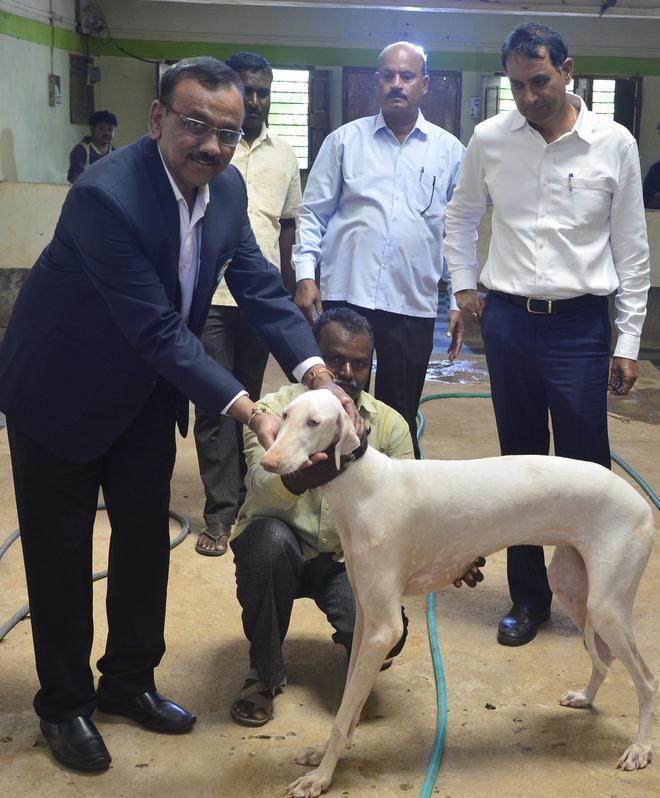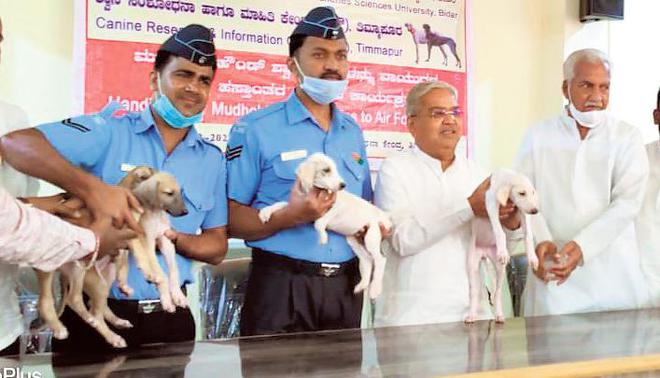Mudhol hound, the majestic hunting dog breed from Karnataka, has entered the elite league of native breeds recognised by the National Bureau of Animal Genetic Resources (NBAGR), that documents all the animal and bird breeds in the country.
This is the first time the Mudhol hound has got official recognition from a government agency. All these years, the much sought after dog breed was only recognised by private agencies like kennel clubs. Along with Mudhol, Chippi Parayi and Rajaplayam dog breeds were also recognised as native Indian dog breeds.
The application for native breed recognition was made by the Karnataka Veterinary Animal and Fisheries Sciences University (KVAFSU).

“It is a matter of pride for all of us. Apart from establishing the identity of an Indian dog breed among internationally famous breeds, this certification is expected to increase its brand value in global markets and help dog breeders earn higher revenues,’‘ said K V Veeranna, vice chancellor, of the university.
A team led by director of research B.V. Shivaprakash prepared a detailed proposal that included a list of features that distinguished the Mudhol from other breeds. It includes genotype and phenotype features, and the native tract or the land area in which it is naturally occurring or usually bred by farmers.
It was based on data collected in KVAFSU’s Canine Research and Information Centre (CRIC) in Thimmapur near Mudhol. CRIC has also won the NBAGR Breed Conservation Award. Ludhiana’s Guru Angad Dev Veterinary and Animal Sciences University won the award for preserving Nili Ravi breed of buffaloes.
Where Mudhols serve
Among the agencies CRIC has supplied pups to are the Indian army and Air force, Remount Veterinary Corps, Sashastra Seema Bal, Central Reserve Police Force, Central Industrial Security Force in Sriharikota, Border Security Force, Bandipur Tiger Reserve, State police, and the elite Special Protection Group that protects VIPs like the Prime Minister.

CRIC was established under the capital grants system of the university in 2009-10. KVAFSU released funds from the Special Component Plan (SCP) and Tribal Sub Plan (TSP) to set up the centre. The Centre’s scientists selected 240 farmers from SC/ST communities who were given free pairs of parent dogs, vaccines and food for one year.
“We also trained them in best breeding practices. An assessment of the scheme later revealed that a large number of the original beneficiaries were still breeding Mudhol hounds,’‘ said Sushant Handage, assistant professor and centre in-charge.
The centre maintains a clearly defined blood line of male and female parents to avoid inbreeding. It supplies certified Mudhol pups to breeders and the general public. “We are helping breeders form a farmers produce organisation to help them get better prices,’‘ Dr Handage said.
Dr. Shivakumar acknowledges the support of the State government to CRIC and to Suresh Honnappagol, former Vice Chancellor, who started the centre and was instrumental in introducing the Mudhol to the Indian army.
What NBAGR does
Haryana-based institute NBAGR is governed by the Indian Council of Agricultural Research Institute. Its mandate includes identification, evaluation, characterisation, conservation and sustainable utilisation of livestock and poultry genetic resources. Its scientists are involved in coordination and capacity building in animal genetic resources management and policy issues.
Regularly, ICAR-NBAGR conducts systematic surveys to characterise, evaluate and catalogue farm livestock and poultry genetic resources and to establish and maintain a National Data Base.
It has various wings tasked with designing methodologies for ex-situ conservation and in-situ management and optimal utilisation of farm animal genetic resources. Its officers undertake studies on genetic characterisation using modern biological techniques such as molecular cytogenetics, immunology, DNA fingerprinting, RFLP analysis and related issues.







